
Three disasters, a wedding and a funeral
Reckoning with family in times of drought, fire and flood
December 2019 – January 2020
Comment
The middle of nowhere

© Evan Vucci / AP Photo
For Australia, the story of the 21st century so far divides into two disjointed decades: a charmed period of affluent complacency followed by a rolling crisis of identity.
The question of who we are becoming as a people, and what sort of country we want to be in an Asian century, could be ducked in that first decade while our local demography, and the American-based international order, was still tinted white. As we close the second decade, the question of national purpose can no longer be avoided. Our ethnic face has taken a decisive turn from Anglo-European to Eurasian, while the multiple disputes between Washington and Beijing threaten our place in the world.
A nimble political system would have adapted to these challenges by now, with a parliament more reflective of our diversity, and a more creative foreign policy free of the 20th-century hang-ups of imperial dependency and big-power genuflection.
But we keep returning to the short cuts of old Australia, with government that errs on the side of parochialism, and a she’ll-be-right diplomacy that assumes the knee jerk of American and Chinese anxieties will never compromise our security and economic interests in the region.
Scott Morrison, the last plotter standing after the coups and counter-coups of the past 10 disruptive years of federal politics, has a Howardesque aversion to complexity in international relations. He is not interested in grand geostrategic theory. He trusts his ability to get along with any leader. In his quiet moments, he might even imagine a scenario where he re-creates the goldilocks balance of the Howard years, when the United States and China served our needs by not asking us to choose between theirs.
But the grand bargain in which China did not contest America’s status as the world’s sole superpower, while the US was happy to see China climb the global income ladder, could not survive the insecurity of Donald Trump and the ambition of Xi Jinping. Their methods of statecraft pose an existential threat for nations like ours because neither leader sees allies and trading partners in the normal way, to be treated with the greatest respect lest they switch sides. Trump and Xi crave veneration, and this can undermine their interest in good relations with third parties. In a curious inversion of previous great power rivalries, the combatants tiptoe around each other’s authoritarian ego, while lashing out at friends and neighbours who don’t bow to their genius. It is a trait they have in common: the American and Chinese presidents are too easily provoked by smaller nation-states and communities that they should, in fact, be courting.
Consider Trump’s decision to cancel a planned visit to Denmark last September because the NATO ally wouldn’t consider selling him Greenland. He felt that the Danish prime minister, Mette Frederiksen, had insulted not just the president, but the American people.
“It was not a nice way of doing it,” he told reporters at the White House. “She could have just said, ‘No, we’d rather not do it.’ She’s not talking to me, she’s talking to the United States of America. They can’t say: ‘How absurd.’”
They did, but here was the rub. Frederiksen had no real leverage. She apologised, even as she stood her ground, hoping the bully would tire of this fight and pick another. “The cancellation of the visit doesn’t change the good relationship between Denmark and the United States,” she said.
There were echoes of Trump’s infamous phone call with Malcolm Turnbull. The onus was on the Australian prime minister to flatter the mad king, but without yielding.
The difference when Xi treats a personal slight as a national affront is that he can more forcefully delegate the tantrum to the state itself. While Trump speaks – and tweets – as a government of one, the state speaks as one for Xi, thus leaving Xi above the fray. China’s recent attempts to censor the US National Basketball Association and the South Park TV cartoon series came from the same thin-skinned place as Trump’s Danish sulk. But where American diplomats might shrug, or even send a quiet message to Copenhagen along the lines of “Don’t worry, he’ll get over it,” Chinese officials were no doubt deployed to reinforce the protest at every opportunity. Xi didn’t invent this practice; it has been a staple of communist diplomacy since Soviet leader Nikita Khrushchev banged his shoe at the United Nations. Xi is the first who has been able weaponise it with the threat of economic harm. When China was smaller, it could only complain. Now it is virtually every country’s largest trading partner and can take its business elsewhere.
Xi’s China has few genuine friends, and Trump’s America is fast running out of them. Australia is just about the only uncritical democratic partner that the US can call on. Not even Trump’s withdrawal of US forces from Syria in October, which triggered a Turkish assault on America’s Kurdish allies, could shake our faith. When the Republican establishment temporarily broke ranks and attacked its president, Morrison conspicuously avoided the global pile on. Trump, the PM explained, was merely following through on promises he made a year earlier to get out of Syria, Afghanistan and Iraq: “I think it would be wrong to not draw an element of consistency between those statements almost a year ago and the action the United States has been taking since, including most recently.”
Earlier that month Morrison adopted Trump’s anti-globalist rhetoric in a speech to the Lowy Institute that left foreign policy experts scratching their heads. Presumably Australian diplomats assured their counterparts in Asia and Europe that the PM hadn’t suddenly turned isolationist, he was just trolling the left at home.
The danger in a see-no-evil approach to the American alliance is it invites the conclusion from our neighbours that we will never grow up as a nation. And it compromises the moral authority of our argument against Chinese interference here and in the Pacific.
The dilemma hiding in plain sight for Australia is that we can’t afford to upset Washington while the leader of the free world is willing to throw allies under the bus in service of his own vanity. Equally, we can’t afford to appease Beijing any longer, when each concession is taken as a licence to rewrite the rules of global trade and diplomacy in China’s favour.
The double standard is apparent when our warnings to China to play by the old rules are weighed against the absence of outrage when the US discards them. Foreign Affairs Minister Marise Payne argues China should be held accountable for its domestic human rights abuses: “Speaking our minds does not constitute interfering in another country. Countries that respect and promote their citizens’ rights at home tend also to be better international citizens.”
Payne was careful to cite examples beyond China’s persecution of the Uighur people in Xinjiang province. She took particular aim at Saudi Arabia and Russia, dictatorships that Trump routinely defends. But she didn’t add the US to her list.
Surely the president’s immigration program, with its travel ban on people from majority Muslim nations and the separation of children from their asylum-seeker parents at the US–Mexico border, offends our values. It is, in effect, a White America Policy, and given our historical baggage on the matter of racial selection one would hope we could tell our friends and neighbours that we have no interest in following Trump down the dead end of nativism. The statement need not be confrontational to send a message of reassurance to Asia. It might be: “The president is a smart man. He would never make the mistake we did with the White Australia Policy.” Perhaps we think it goes without saying. But silence can be misread as consent.
To be fair, Australia’s political class is still processing the multiple domestic and international shocks of the past decade, which was marked by an absence of national purpose that can be measured through the indulgence of the leadership spill. The mechanism used just twice to oust a sitting prime minister in the first 110 years of Federation became routine from 2010. Four PMs were removed in eight years; two on each side, at a rate of one per parliamentary term. The turnover violated the rhythm of Australian democracy, and triggered a freefall in respect for government and the institution of parliament from which it may take a generation to recover.
As the body count rose, a ripple of ridicule ran from the suburbs to the global stage. Australian paramedics adjusted their concussion tests, removing the question “Who is the prime minister?” when attending accident scenes. Meanwhile, world leaders added a new question when greeting the Australian PM for the first time: “What happened to your predecessor?” When the leaders of the 20 largest economies met in Buenos Aires in November 2018, German chancellor Angela Merkel carried a picture of Morrison in her briefing notes, and didn’t try to hide it when she sat with him.
It was tempting to conclude that Australia’s moment as a respected middle power had passed. The previous decade’s example of avoiding the worst of the global financial crisis had been erased by the lost opportunities to guide global opinion since, most notably on climate change. That is certainly true if the lens of influence was just leadership and the lever-pulling of public policy. Yet Australia retains the ability to surprise even when the system is exhausted, and the people are polarised and disengaged. For all our faults, we remain a laboratory for diversity.
No other rich country we compare ourselves to has Australia’s ethnic face, almost equal parts Asian, Anglo and European. But many Western nations are converging towards a version of it as their societies age, and immigration from India and China assumes a larger role in population and economic growth. Our example as the pioneer for demand-driven skilled migration will influence those nations that want to keep their doors open, just as surely as our counter symbol of border protection will inspire those who want to close it to asylum seekers.
Australia remains an ambivalent role model even though we are the first rich nation to reach majority migrant status. More than half the population now either were born overseas or have at least one migrant parent. The threshold was crossed in 2018, when the total population passed 25 million. The last time we were here was in the 1890s, when the settlers numbered around 3.5 million and the six colonies had yet to form the Commonwealth of Australia.
In the United Kingdom and the US today, fewer than 30 per cent of the people either were born overseas or have at least one migrant parent; in Canada, the figure is above 40 per cent; New Zealand is approaching 50 per cent. Yet we remain on the white fence, sitting between the Canadians and New Zealanders who celebrate their diversity, and the British and the Americans, who are increasingly terrified of it.
Our politics, though, remains frozen in the identity of the previous decade, when we were still majority local-born. This is partly due to the excessive whiteness of the parliament. Politicians as a class look nothing like the people they serve.
But old Australia still holds the balance of power in the electorate. Queensland, the whitest state on the mainland, saved Morrison and his riven government last May.
Yet even Queensland contains its share of cultural paradoxes. Brisbane is one of four Australian cities that no longer has the English as the largest ethnic community. New Zealanders displaced them earlier in the decade, as they did on the Gold Coast. In Sydney, it is Chinese who are number one; in Melbourne, Indians; and in Darwin, it is migrants from the Philippines who are the dominant group.
These shifts are the prelude to the great identity shocks of the 2020s, when Australia will complete the next phase in its long-promised journey from an Anglo-European nation to a Eurasian one. The Englishborn will drop to third place across the country behind the Indian and Chinese communities.
Conservatives and Labor people alike have misread the past election as the final word of who we are as a people. They forget that politics operates with a time lag.
In the past, the party that won a majority of seats in Sydney and Melbourne could be assured of forming a stable majority government, and of making the immodest claim of bridging the foundational divide in Australia between the convict capital and the gold-rush capital. Each side has an era-defining regime in this category that serves as the lodestar for their tribe. For the conservatives it was the Menzies government; for Labor it was the Hawke government.
Today, the party with a majority in Sydney and Melbourne is more likely to enrage the rest of the country than unite it. This has been Labor’s curse in the 21st century so far, after it squandered the last moment of national unity in 2007, when it stormed into office under Kevin Rudd’s leadership.
At the elections of 2010, 2016 and 2019, the centreleft party won a majority in both Sydney and Melbourne, for a return of one minority government under Julia Gillard and two narrow losses in Opposition under Bill Shorten. Each time, Labor was denied by a conservative supermajority in the frontier states of Queensland and Western Australia, which cancelled the party’s advantage in the southern capitals. Even in their landslide defeat in 2013, which terminated the Rudd–Gillard government, Labor still claimed an overwhelming majority of seats in Melbourne, and almost broke even in Sydney.
Gillard and Shorten are Melburnians, and that might explain Labor’s failure to garner a national majority. But the old calculus of hometown loyalty was broken. The Coalition was led by Sydneysiders throughout this fractured decade: Tony Abbott, from the Liberal Party’s conservative wing; Turnbull, a moderate; and Morrison, who presented as an everyman in a baseball cap. Only once, in 2013, did the city side with the Liberal leader, but then it couldn’t wait to be rid of him. Fearing annihilation if Abbott was still prime minister at the next election, Liberal members of parliament replaced him with Turnbull, his ideological rival.
Turnbull promised to return the government to the centre, but at the 2016 election the Coalition came within a seat of losing its majority, while Sydney reverted to a majority Labor city, and New South Wales to a majority Labor state. And while Labor’s election review pinned a fair portion of blame for its 2019 defeat on Shorten’s unpopularity, it is important to remember that this unpersuasive Melburnian still beat Morrison in his Sydney backyard.
Sydney and Melbourne are 40 per cent of the population and have more than half the nation’s migrants. Economic power is increasingly anchored in our two largest cities. Yet they will be denied electoral power, even as they grow together, if neither party can build a bridge between them and old Australia.
What happens when the combination of Melbourne’s population growth and the drift north of Indian and Chinese migration to the Gold Coast and especially Brisbane redraws the electoral map in favour of new Australia?
The big question for the 2020s is whether our system can reconcile new and old Australia before the US and China crash the global economy and open a permanent rift between the cosmopolitan capitals and the rest of the country.

Three disasters, a wedding and a funeral
Reckoning with family in times of drought, fire and flood
Back in the red
Coalition governments have protected their own. Australia can’t afford it any longer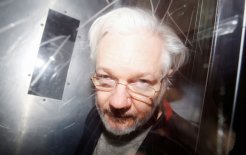
Viral injustice
Julian Assange’s extradition trial continues as an attack on journalism
Desert bloom: The Tennant Creek Brio
The brazen art movement born out of the troubled legacies of substance abuse and dispossession A Pentecostal PM and climate changeDoes a belief in the End Times inform Scott Morrison’s response to the bushfire crisis?
A Pentecostal PM and climate changeDoes a belief in the End Times inform Scott Morrison’s response to the bushfire crisis?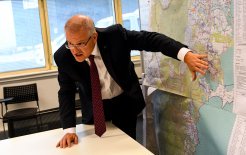 A national disasterOn the PM’s catastrophically inept response to Australia’s unprecedented bushfires
A national disasterOn the PM’s catastrophically inept response to Australia’s unprecedented bushfires Howard’s Heir: On Scott Morrison and his suburban aspirationsHow the PM’s ‘Quiet Australians’ echoes Howard’s battlers and Menzies’ ‘Forgotten People’
Howard’s Heir: On Scott Morrison and his suburban aspirationsHow the PM’s ‘Quiet Australians’ echoes Howard’s battlers and Menzies’ ‘Forgotten People’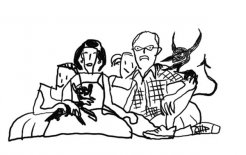 The Devil and Scott MorrisonWhat do we know about the prime minister’s Pentecostalism?
The Devil and Scott MorrisonWhat do we know about the prime minister’s Pentecostalism?
Damascene subversion: Christos Tsiolkas’s ‘Damascus’
The literary storyteller’s latest novel wrestles with the mythology of Christianity’s founder, Paul the Apostle
Cap in hand
An unprecedented twist in the Walkley Award–winning story of the David Eastman murder case![Cover of Peter Pomerantsev’s ‘This Is Not Propaganda’ Cover of Peter Pomerantsev’s ‘This Is Not Propaganda’ [detail]](http://web.archive.org./web/20200401223638im_/https://www.themonthly.com.au/sites/default/files/styles/panel_image_small/public/Lohrey_1140x700_v2.jpg?itok=BCUIHHKL)
Agents of chaos: Peter Pomerantsev’s ‘This Is Not Propaganda’
The Russian expat journalist wonders if democracy can survive the internet, as social media is used to promote feelings over facts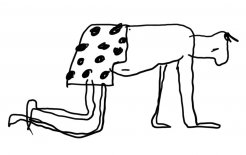
Big man energy
At the Menergy retreat, men tackle anger, address emotional resilience and dance like wild women
A month of plague
Voices from the coronavirus outbreak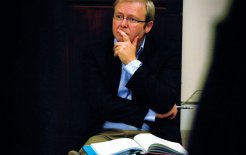
Descent from the summit
Looking back on Kevin Rudd’s overly ambitious and thinly detailed Australia 2020 Summit
Leaders and dung beetles
On John Cain, Scott Morrison and our curious inability to elect good people
Revolutions past
Labor and the Liberals have abandoned their old ideological contests as they battle to define the values of the new middle class
Viral injustice
Julian Assange’s extradition trial continues as an attack on journalism
Wage fright
COVID-19 isolation rules have seen artists’ livelihoods disappear
Opposing forces
Even during a time of crisis, history shows that partisan politics has a role to play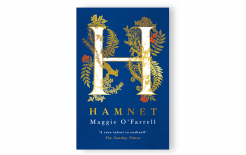
What dreams may come: ‘Hamnet’
Shakespeare’s son succumbs to plague as Maggie O’Farrell conjures Elizabethan England
Comments